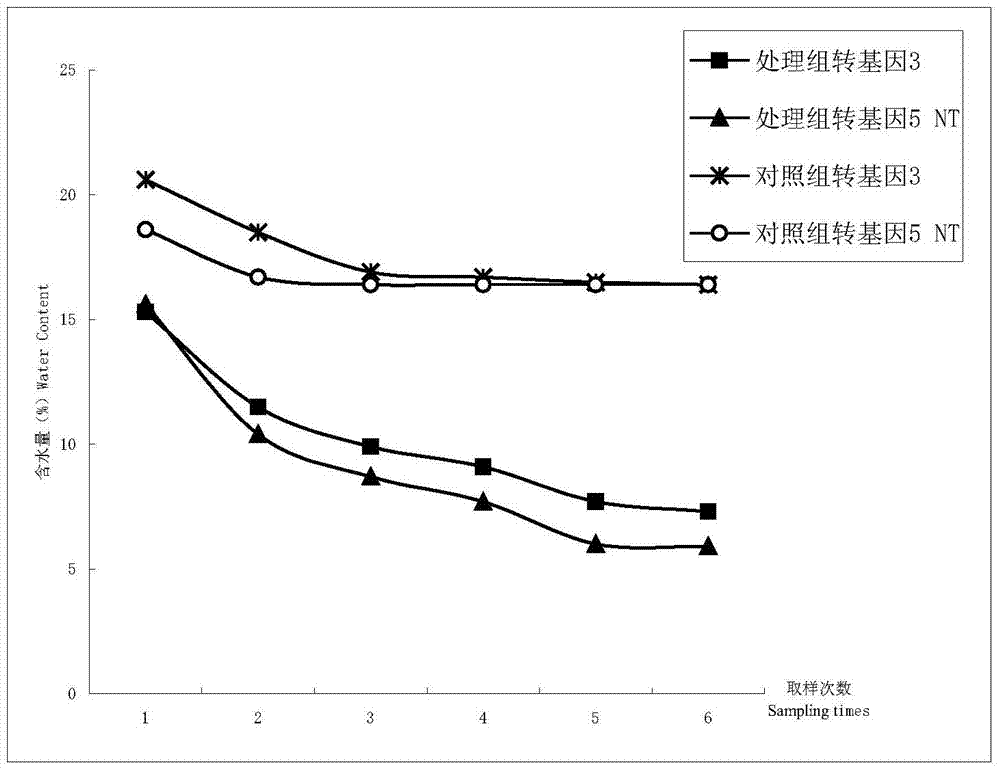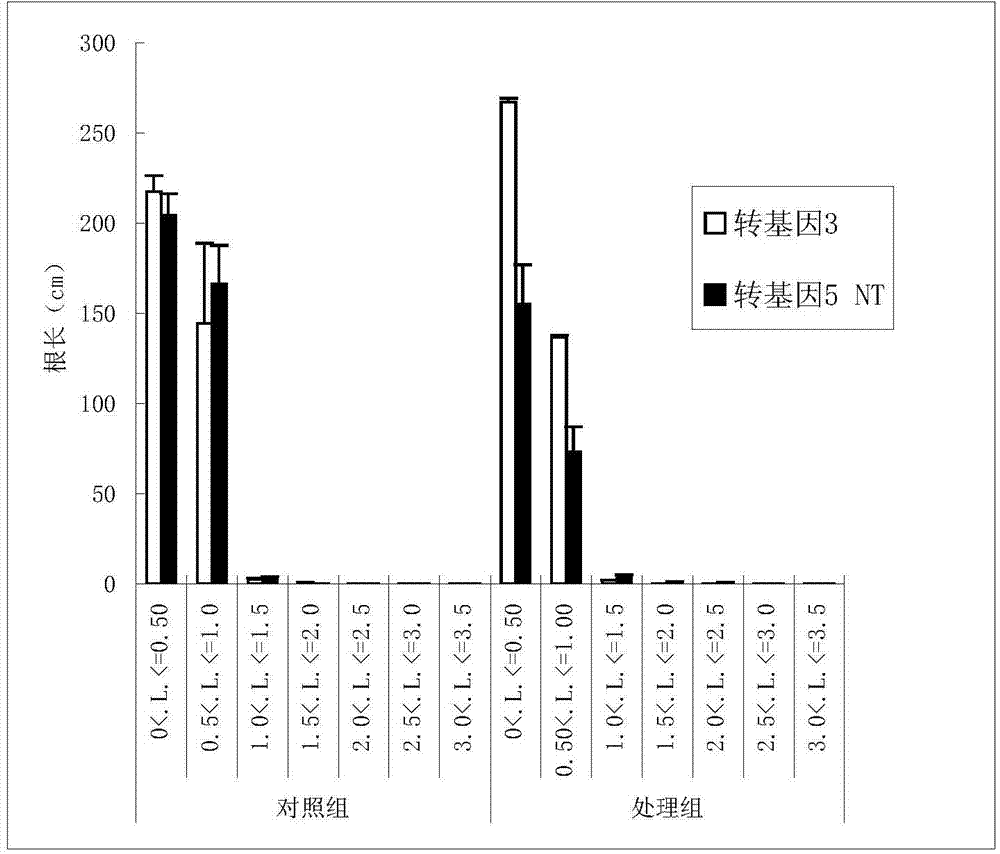Method for screening drought tolerant variety by using rice secondary root difference
A technology for secondary roots and rice seeds, applied in horticultural methods, botanical equipment and methods, applications, etc., can solve the problems of difficult rice drought-tolerant material selection, etc., and achieve the effects of easy screening and distinction, simple phenotype, and accurate results
- Summary
- Abstract
- Description
- Claims
- Application Information
AI Technical Summary
Problems solved by technology
Method used
Image
Examples
Embodiment Construction
[0029] 1.1 Test materials
[0030] The present invention takes the transgenic 3 material containing the CBF3 gene that can significantly improve the drought tolerance of rice and the control transgenic 5 NT material (the wild type of transgene 3) without the CBF3 gene as an example for illustration. Provided by the Department of Biological Sciences and Bioinformatics.
[0031] 1.2 Test method
[0032] (1) Disinfection treatment of rice seeds
[0033] Take the transgenic 3 material containing the CBF3 gene and the control transgenic 5 NT material that does not contain the CBF3 gene. 100 rice seeds of different materials from different materials that are newly harvested, full, and intact without insect damage, are put into different net bags and reused. 1.0mol / LHNO 3 After soaking for 30 minutes, wash 3 times with distilled water, and then use 10% H 2 O 2 Treat it for 15 minutes, then wash it with distilled water 3 times before use;
[0034] (2) The filter paper method of ri...
PUM
 Login to View More
Login to View More Abstract
Description
Claims
Application Information
 Login to View More
Login to View More - R&D
- Intellectual Property
- Life Sciences
- Materials
- Tech Scout
- Unparalleled Data Quality
- Higher Quality Content
- 60% Fewer Hallucinations
Browse by: Latest US Patents, China's latest patents, Technical Efficacy Thesaurus, Application Domain, Technology Topic, Popular Technical Reports.
© 2025 PatSnap. All rights reserved.Legal|Privacy policy|Modern Slavery Act Transparency Statement|Sitemap|About US| Contact US: help@patsnap.com



